It actually never really occurred to me that going to Graceland would mean more than just visiting the mansion that Elvis Presley lived in until his death in 1977.
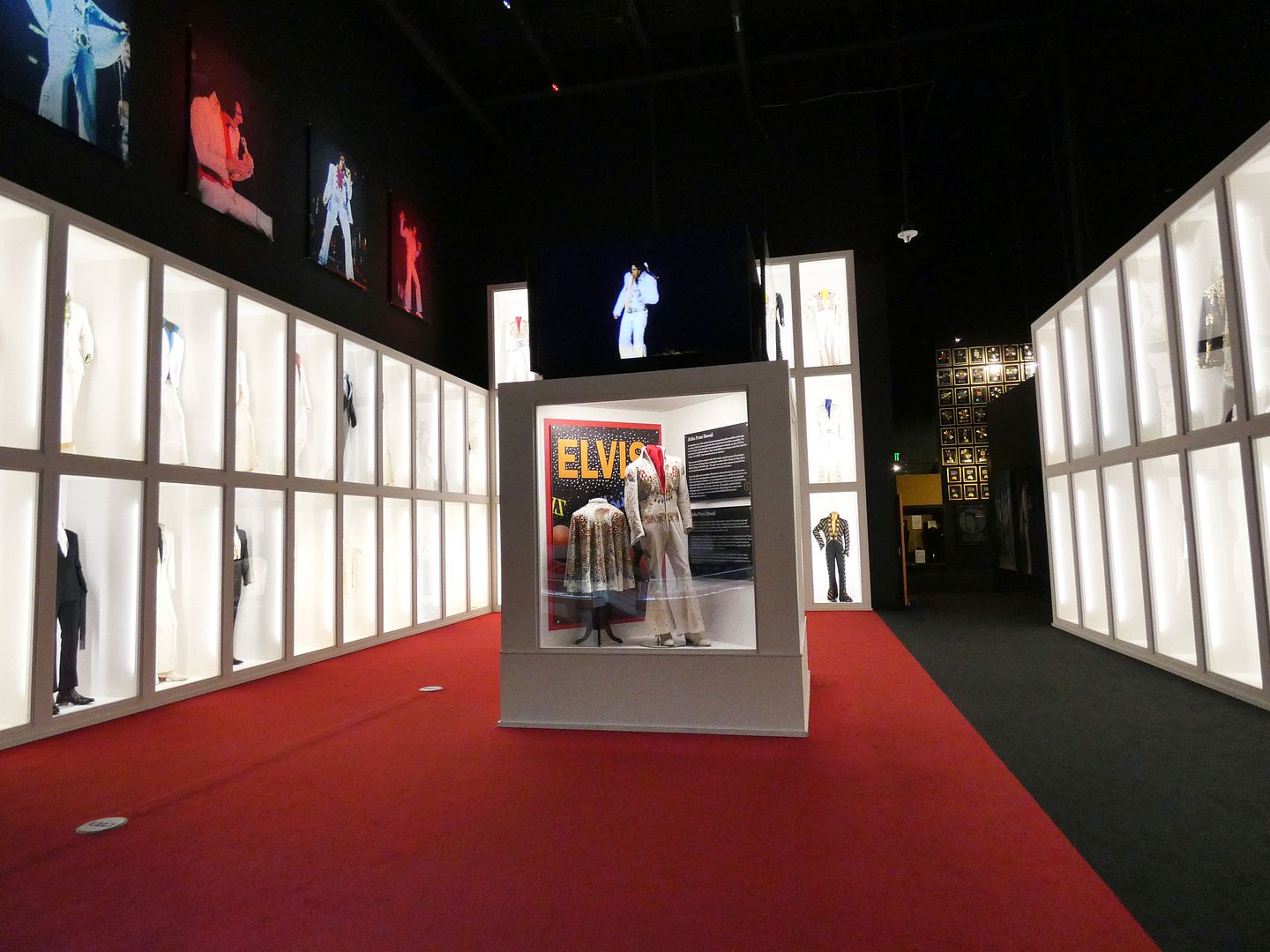
But actually there's more—a lot more—across the street, including the "Elvis: The Entertainer Career Museum."

This larger-than-life exhibit includes a room that feels like it's three stories high worth of Elvis-worn jumpsuits, each with their own stories of design and intention (and popularity/reception).
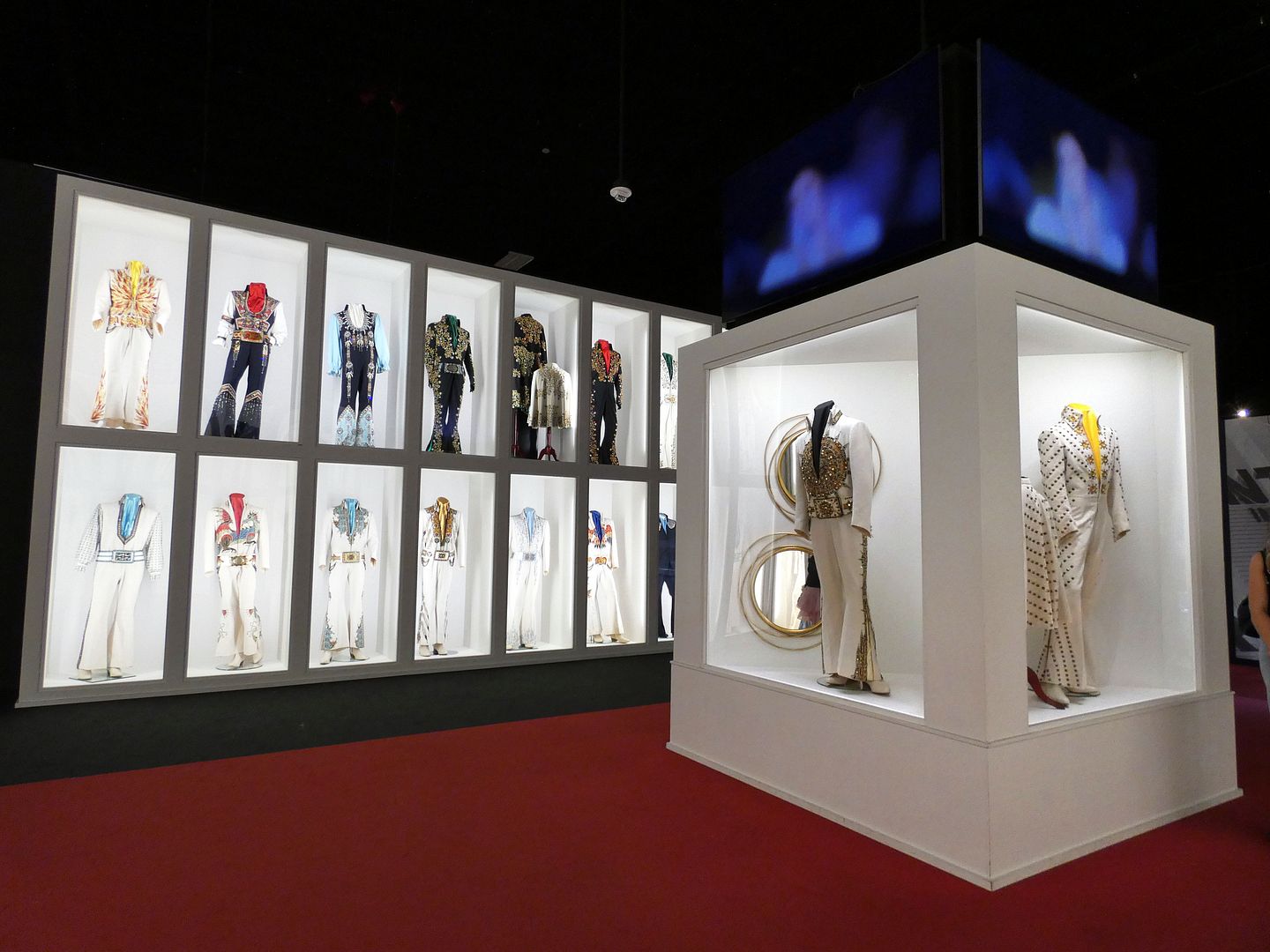
In Elvis's later career, the jumpsuits—which evolved from fringed-and-beaded to rhinestoned-and-studded—kind of became a character in and of themselves, beyond Elvis the man and his music (and karate moves).

Elvis's personal designer, Bill Belew, was responsible for dressing Elvis in mostly white—which reflected the Vegas lights better than black.
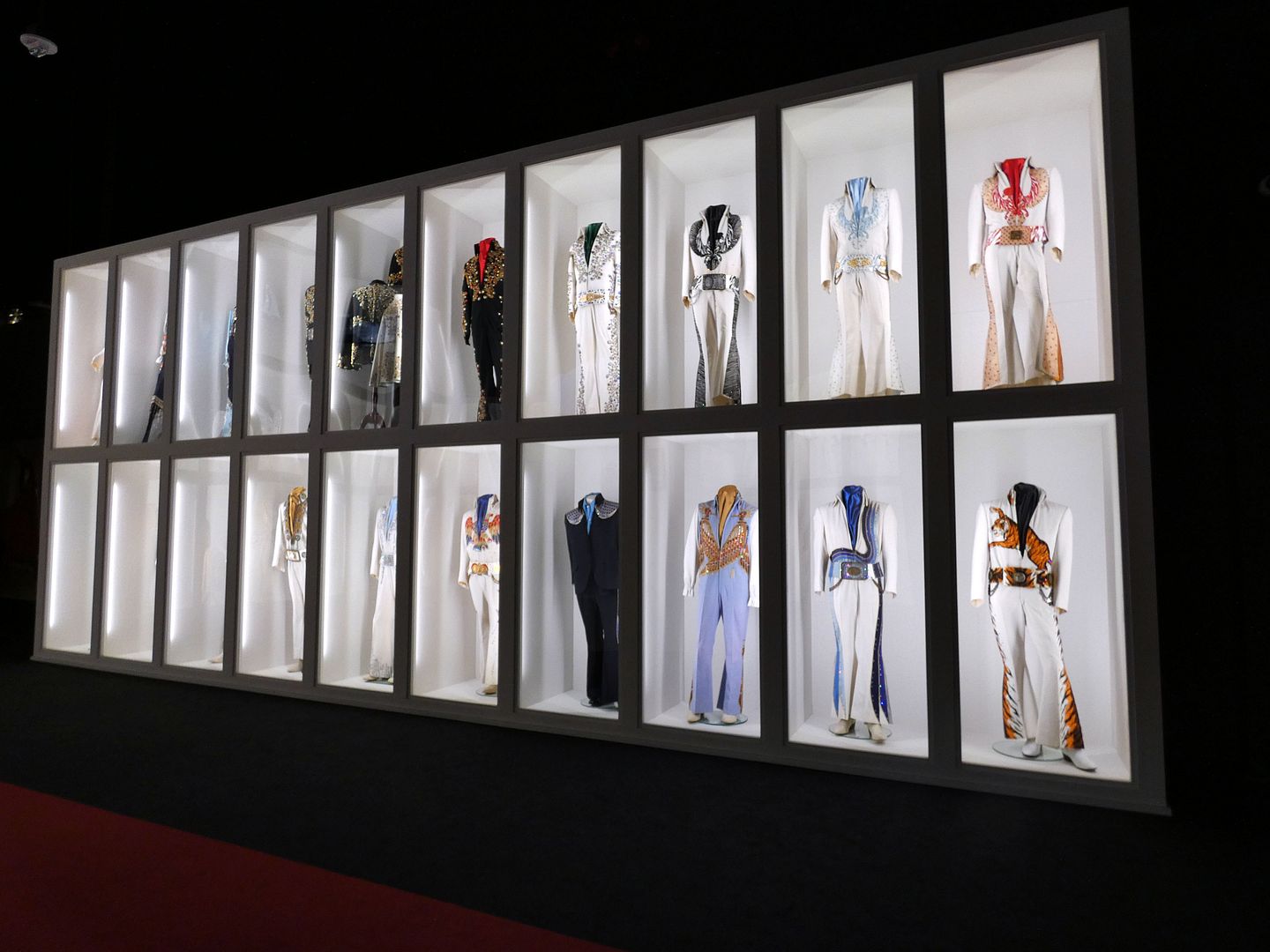
Belew also chose the kick pleats (not bell bottoms, and good for legs kept in motion) and Napoleonic collars and cuffs that became hallmarks of Elvis's trademark look...
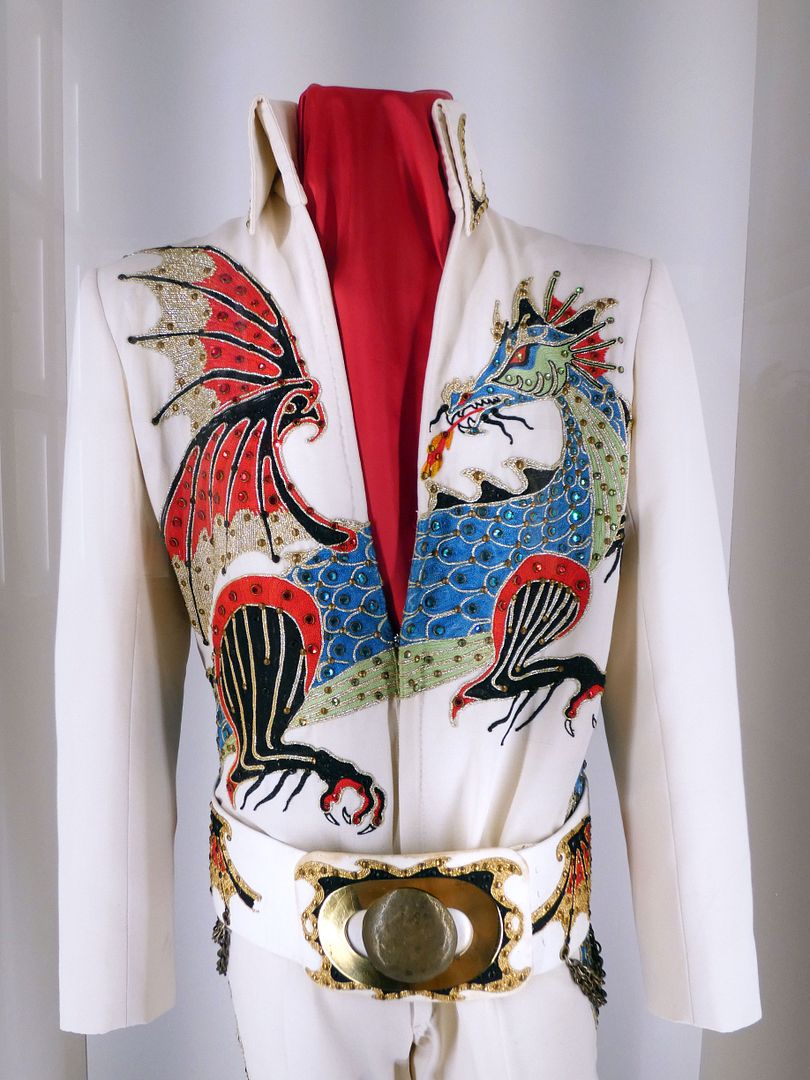
...primarily because nobody else could pull off those wardrobe choices like Elvis could.
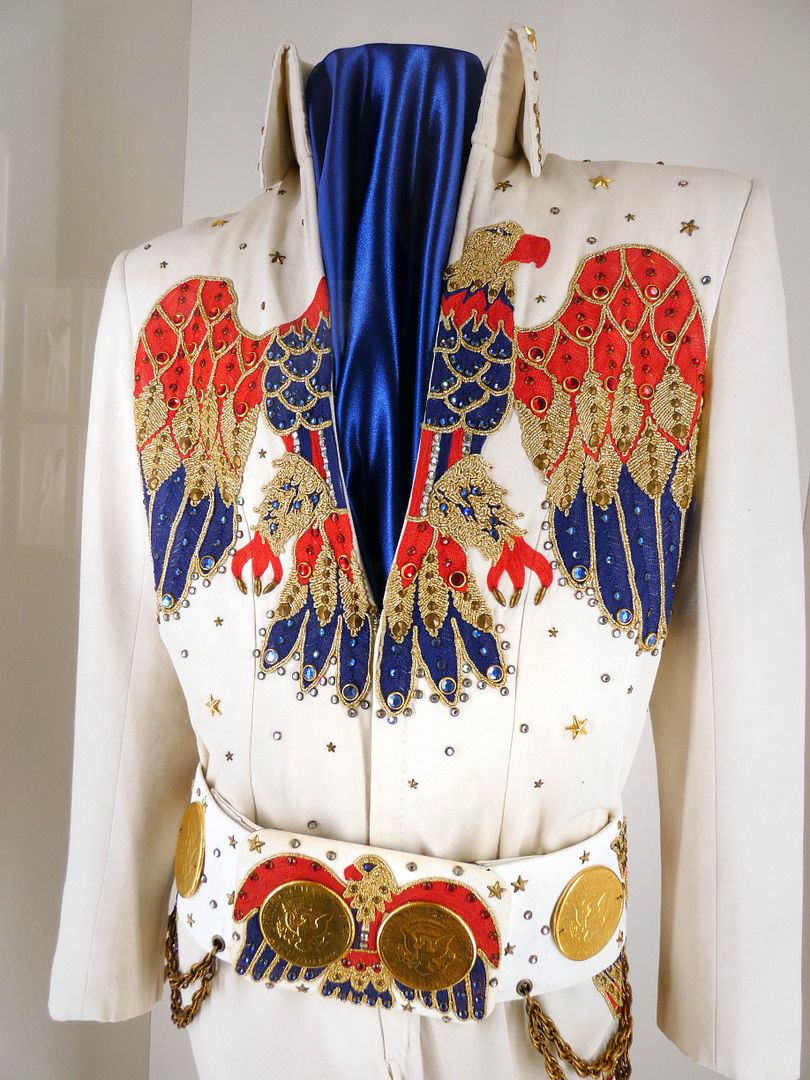
Prior to that, Napoleonic collars had really only been used on women's clothing.
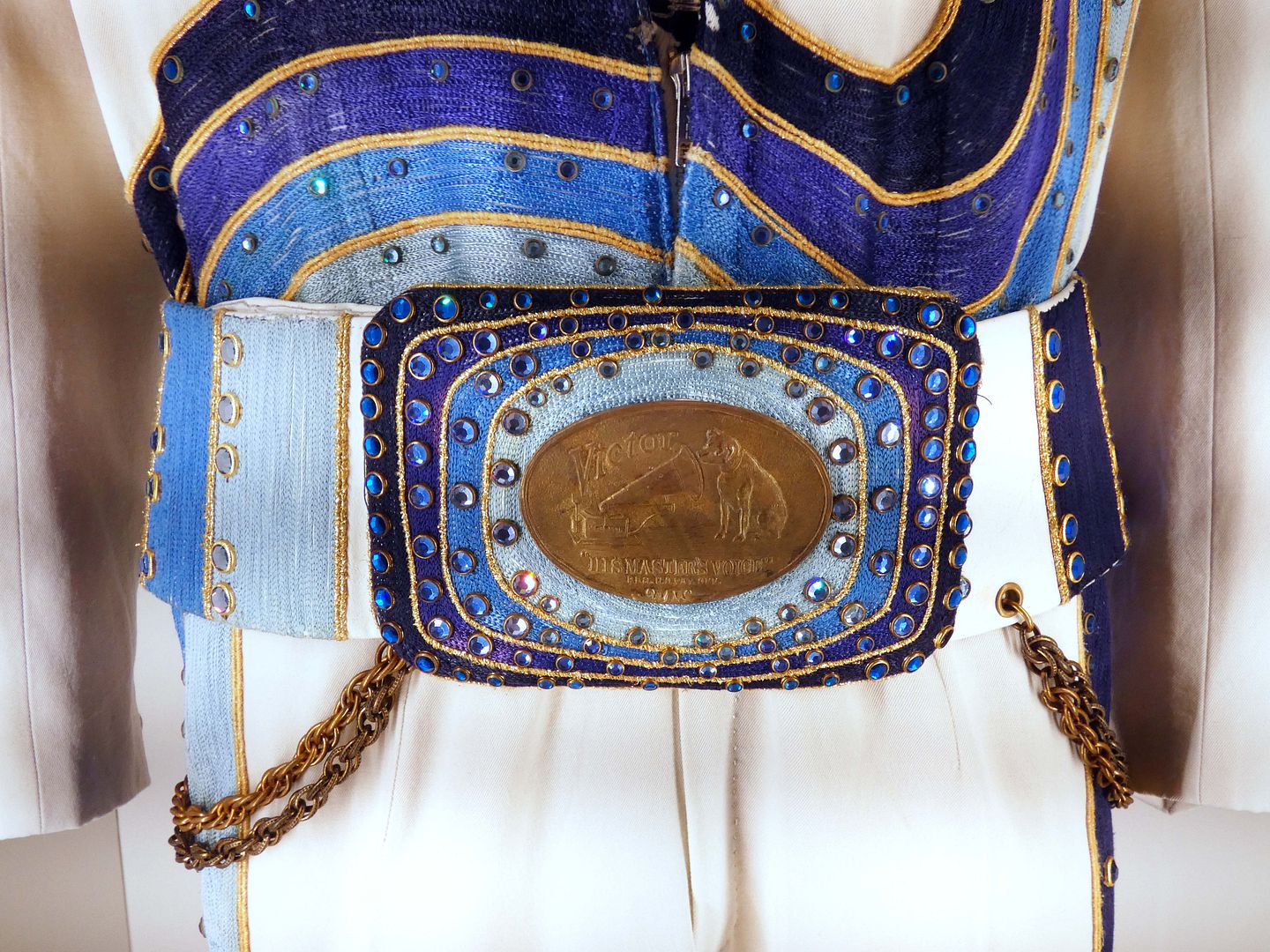
All that ornamental hardware—plus big metal belt buckles, and sometimes chains—got really heavy. Besides that, the jumpsuits were hot anyway—and during an era that Elvis was particularly sweaty—so they'd go through a lot of jumpsuits while Elvis toured the country in between his Vegas stints.
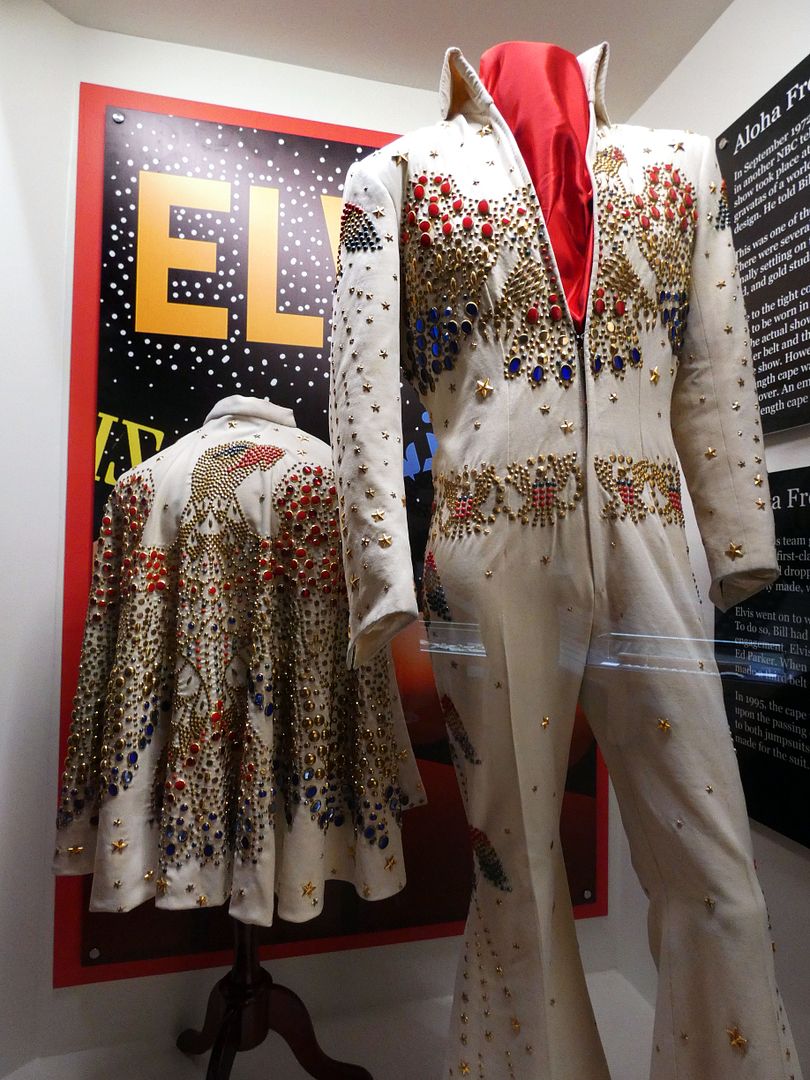
But audiences—and even critics—had come to expect the eye-catching outfits, which were integral to the show. So the only way to make them lighter was to shorten the capes from calf-length to waist-length. For the Aloha from Hawaii TV special (1972), Elvis requested a jumpsuit that said "America"—and now, the bald eagle is probably the jumpsuit most associated with the superstar (thanks to its starring role in the worldwide satellite broadcast and in many Vegas shows afterwards).

Of course, Elvis and fans alike needed something to mop up all that sweat with—and Elvis-signed handkerchiefs, also on display at the Career Museum, made popular souvenirs to purchase at the Vegas shows. 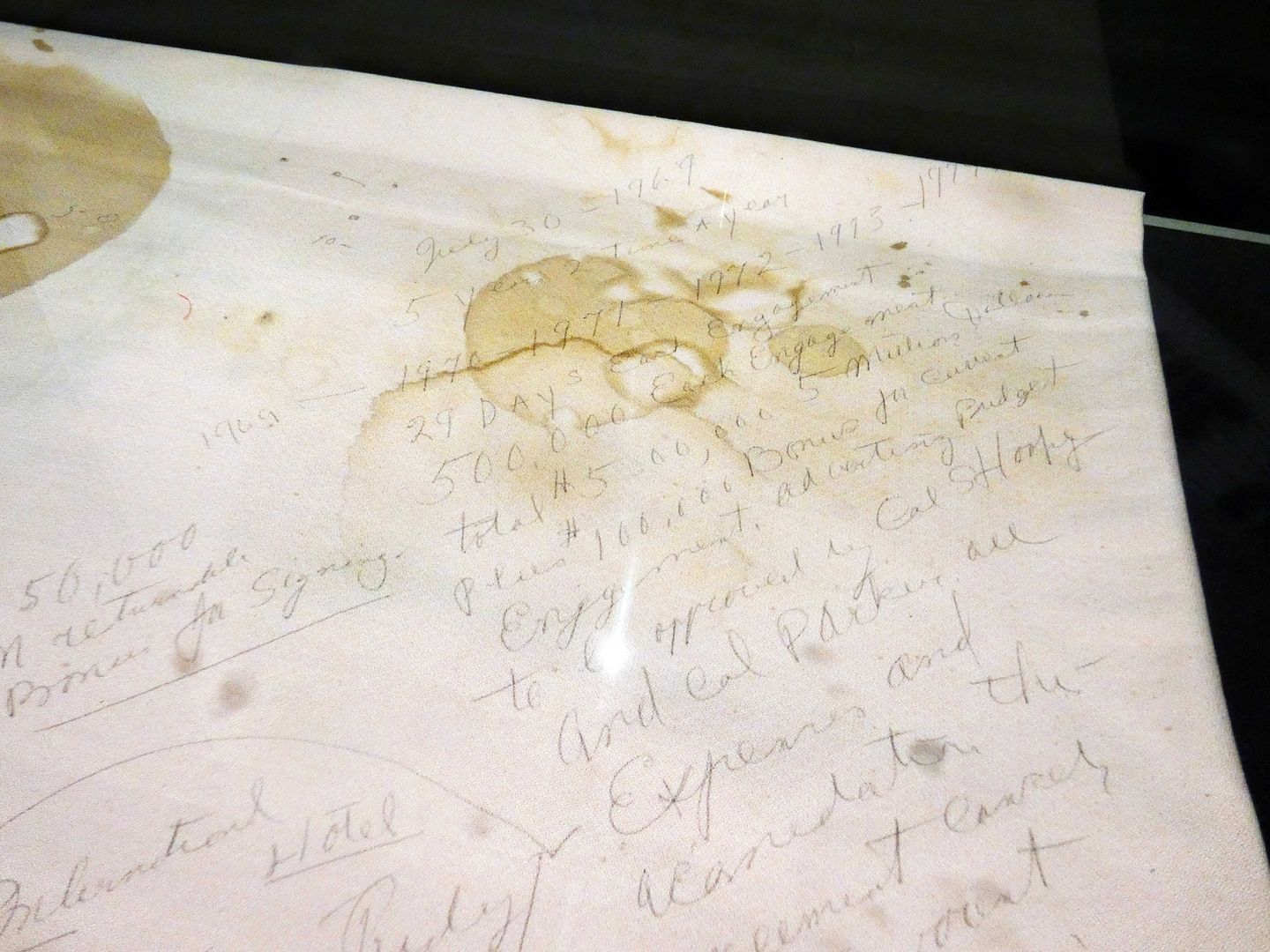
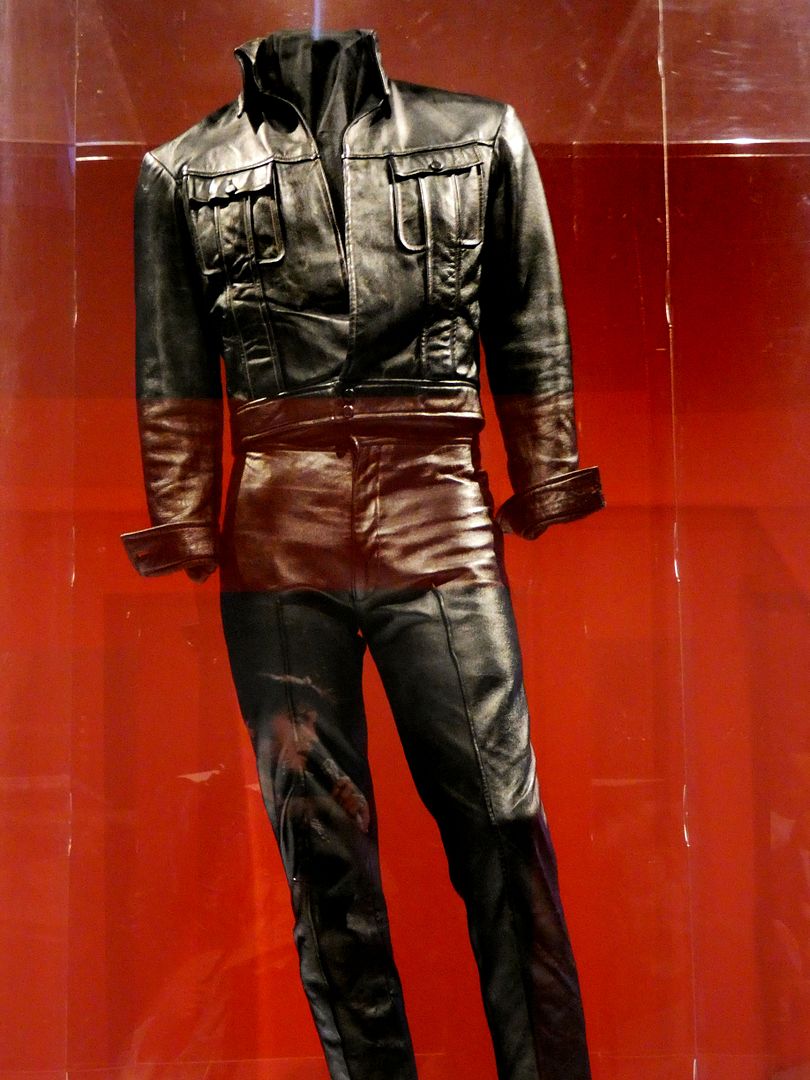
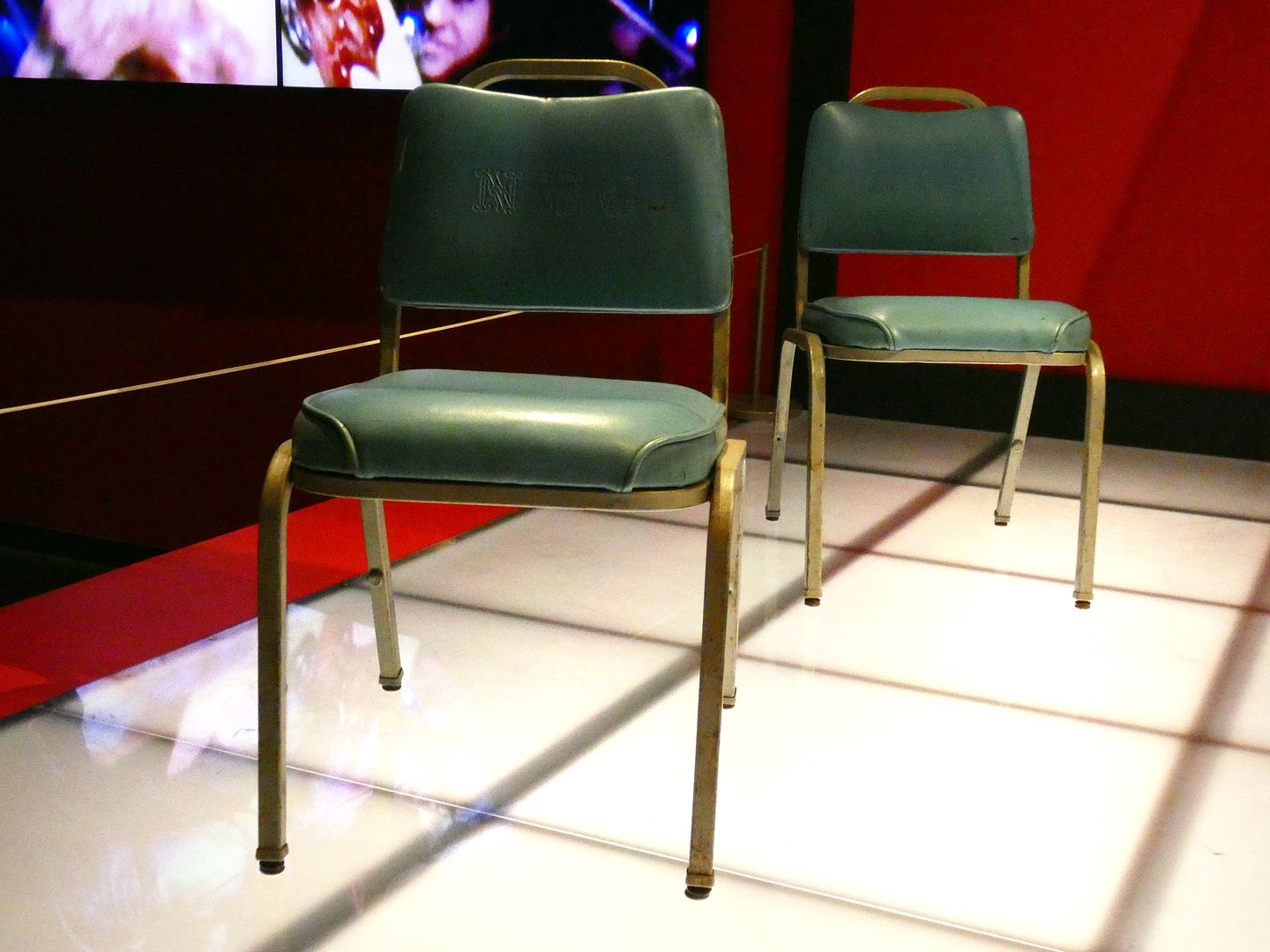

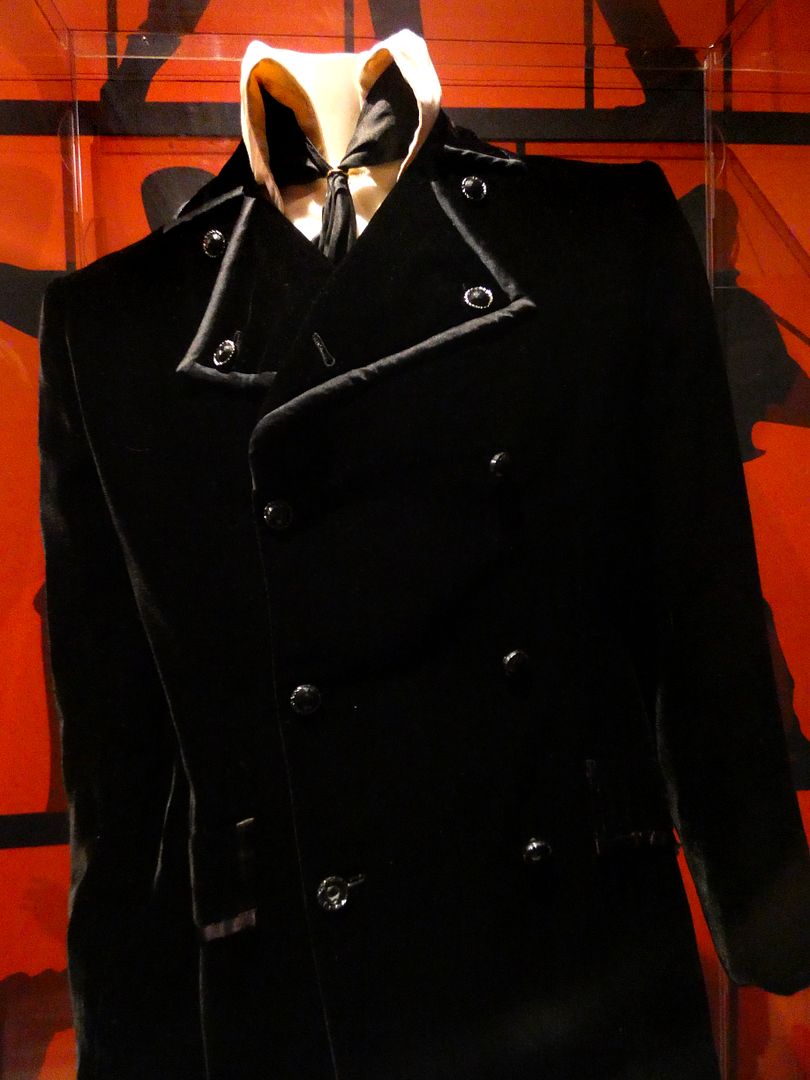

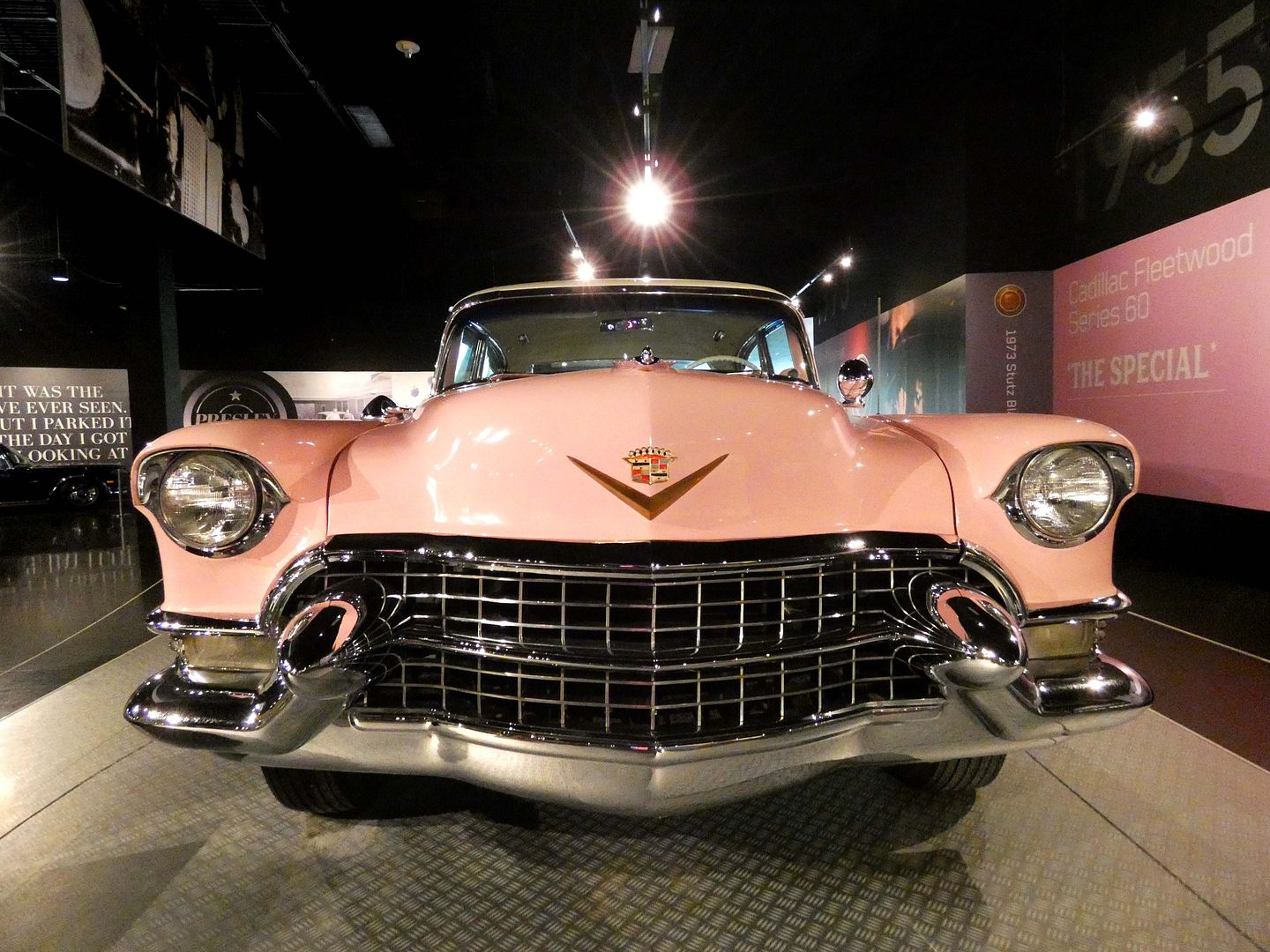
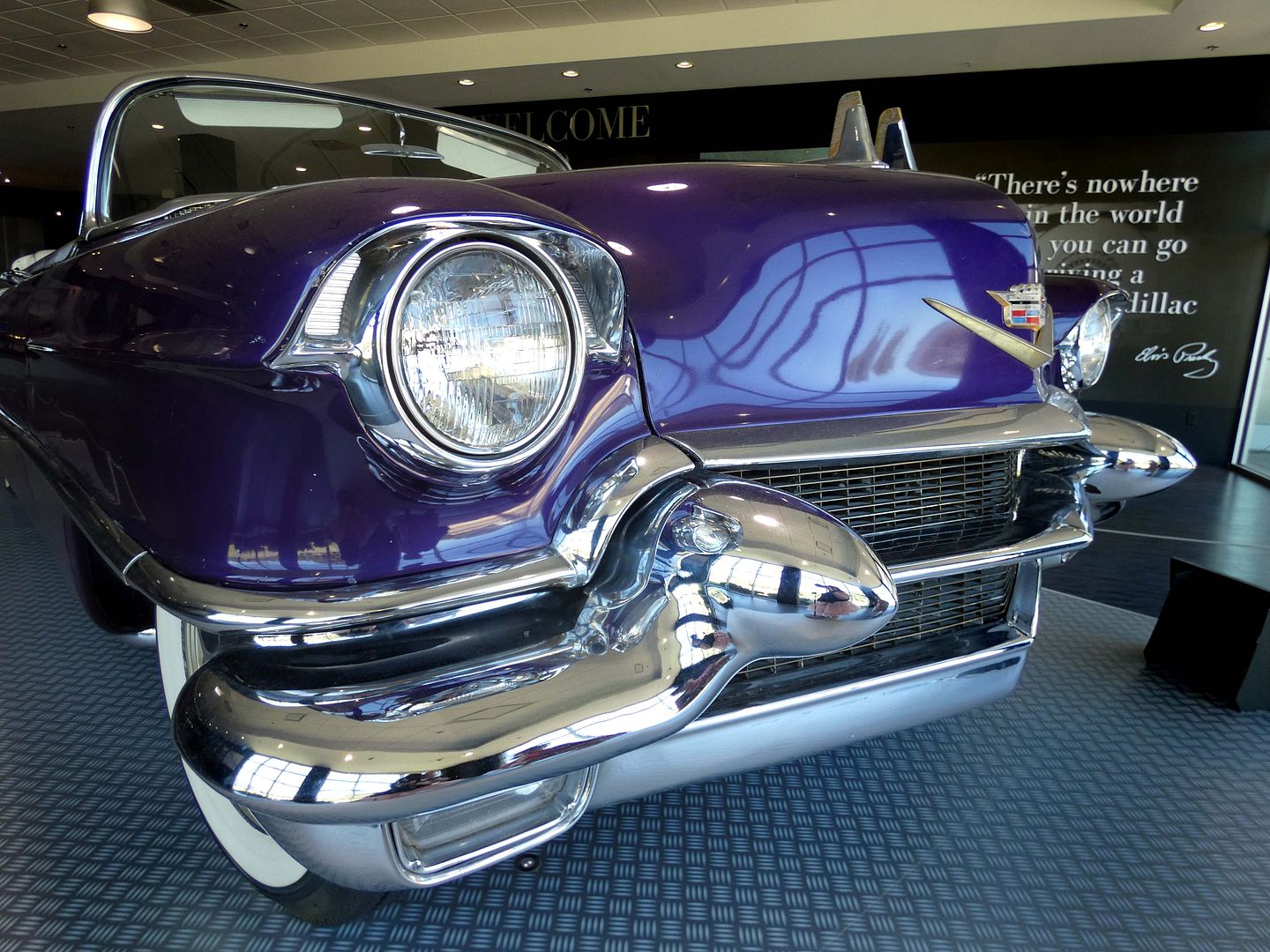
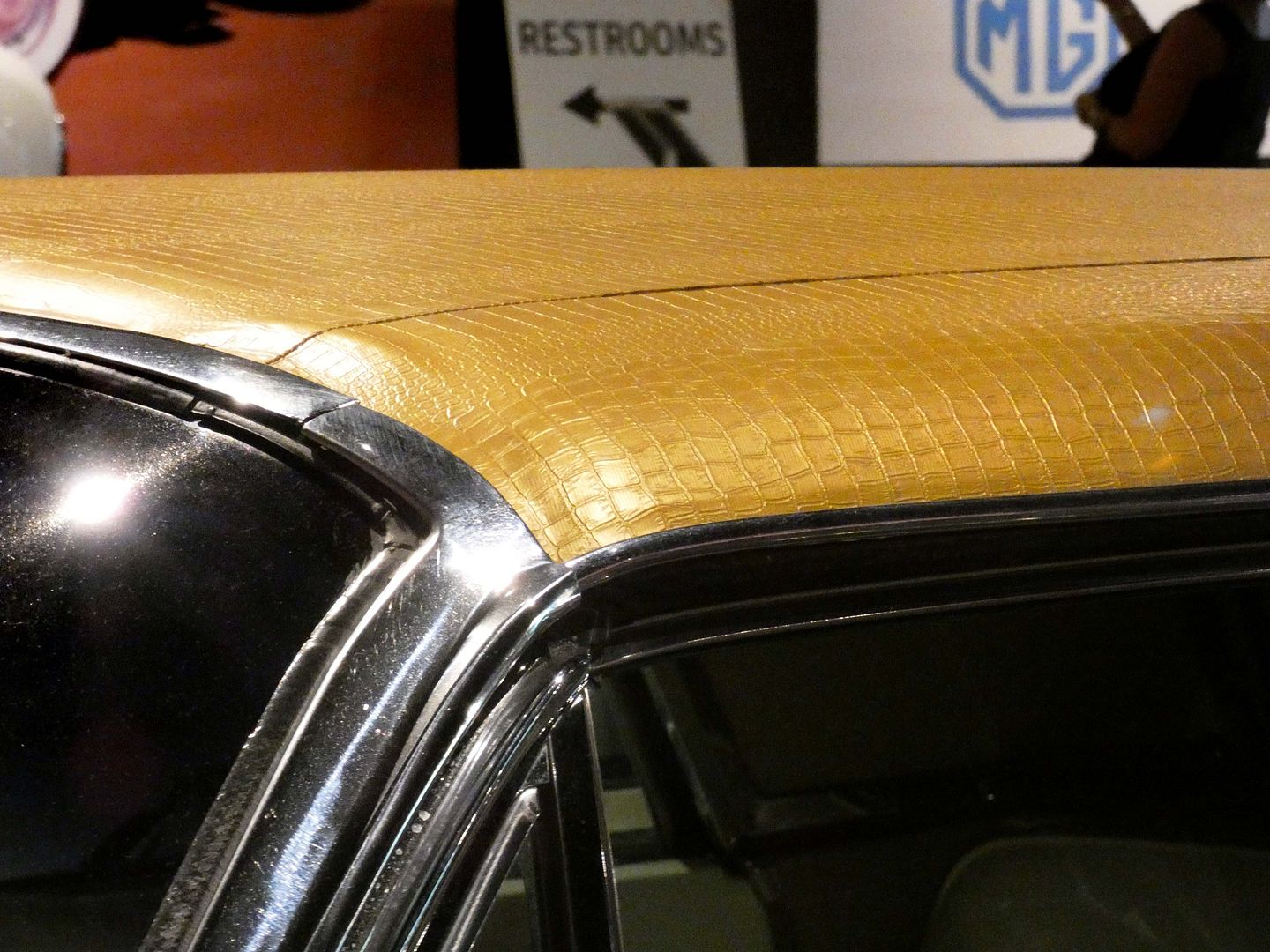


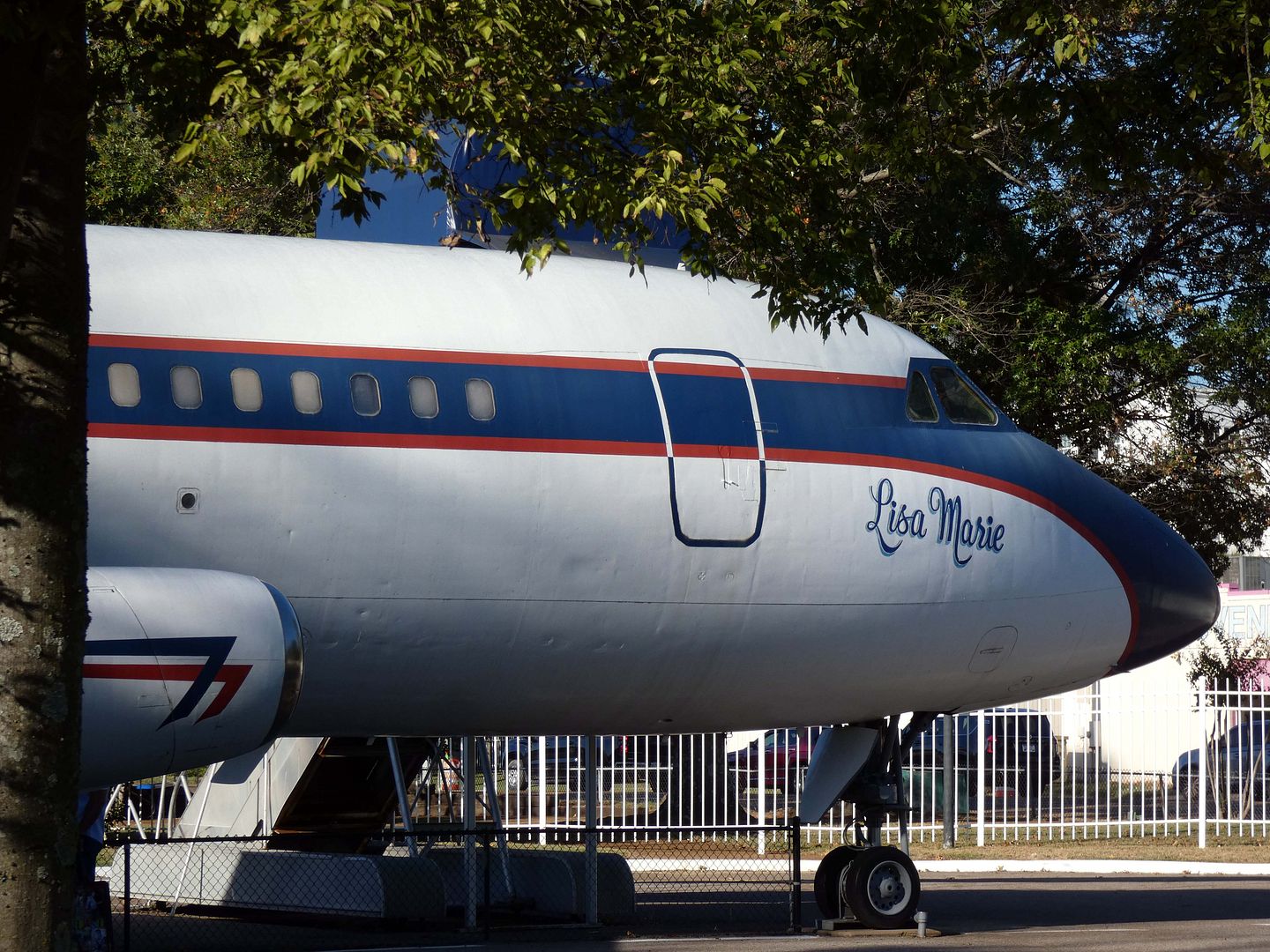




One of the most amazing artifacts in that museum is the "tablecloth contract" that sealed Elvis's future at the International Hotel, negotiated and signed by his manager, Colonel Parker.

I couldn't help but gasp when I saw the leather outfit (with a Napoleonic collar) Elvis wore on his '68 Comeback Special.

And God, I wish I'd gotten to sit in one of those audience chairs at the NBC taping.


There's an entire section of the museum devoted to this TV special (which, at the time, was just called Elvis)—including red sets, his name in lights, and the wardrobe from the "If I Can Dream" number and the club scene (above, left) and supper club scene (above, right).

Going farther back in his career, and elsewhere in the museum complex, there's also the Nudie Cohn-designed gold lamé suit Elvis was famously photographed in (starting with RCA's "1,000,000 Elvis Fans Can't Be Wrong" campaign).

The museum complex across the street from the mansion also houses Elvis's enormous car collection—some of which used to be parked at the mansion but was moved for proper storage here.

In addition to the famous pink Cadillac (a 1955 Cadillac Fleetwood, which Elvis eventually gave to his mother Gladys), there's also a 1956 Cadillac Eldorado Biarritz Convertible Coupe, which Elvis had custom painted from white to purple and then traded in in 1957.

Elvis also had his 1962 Lincoln Continental customized with a gold alligator top (in Vegas, of course).

Elvis kept the 1960 red MG convertible from Blue Hawaii for a while, but then traded it in at a car dealership in Hollywood.

In the 1970s, Elvis preferred riding around on motorcycles and three-wheelers, like the 1974 Ruff Centaur trike (above) and the 1975 Super Cycle Super Trike that he'd tool around Memphis in (inevitably, without a helmet). But at Graceland itself, workers and guests could be seen riding golf carts, trucks, and even a John Deere tractor around the former ranch.

But for the last two years of his life, when Elvis had to leave Memphis, he did so upon the 1958 Convair 880 private jet he bought in 1975 and named after his daughter, Lisa Marie.

Known as the "Graceland of the Skies," the Lisa Marie was equipped with a conference room (above), living room, bathroom with a gold-flecked sink, barber chair to get his hair and makeup done, and even gold-plated seat belts.

Chairs were covered in suede, and tables were covered in leather—but now, in Elvis's private mile-high bedroom, the bed is just covered in plastic.

Given Elvis's notorious work ethic, though, you can be sure this wasn't just partytime in the air—because the plane's tailfin is emblazoned with the King of Rock and Roll's motto, "Taking Care of Business in a Flash" (TCB⚡️), which he adopted in the last decade of his career.
Thankfully, the planes stayed open after Graceland's advertised closing time of 5 p.m.—because we got there last, after all the other doors had been locked and the gift shop politely asked us to leave.
In the end, we shut the whole place down, staying until about 5:45 p.m. I swear we were the last visitors to leave. We could've stayed two whole days there—way beyond the six and a half hours we spent—and probably still wouldn't have seen everything or been satisfied with the amount of lingering we were allowed.
Now I understand why some people keep going back.
Related Posts:

No comments:
Post a Comment